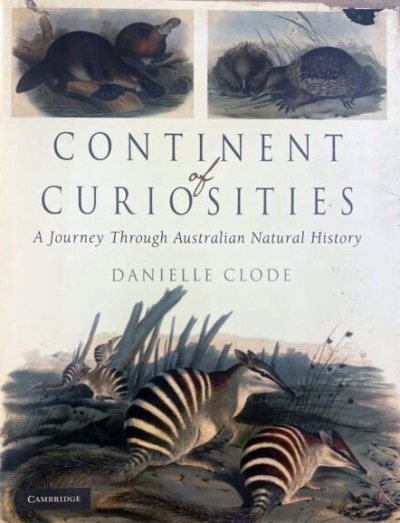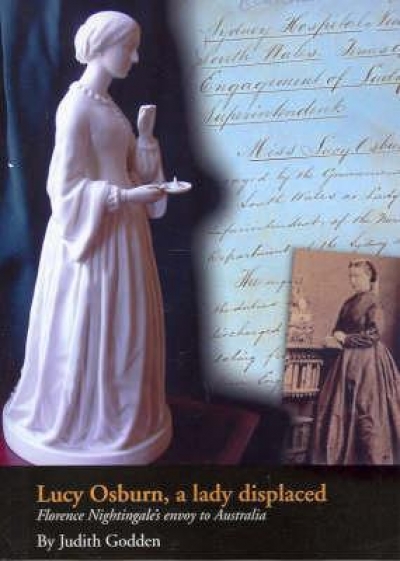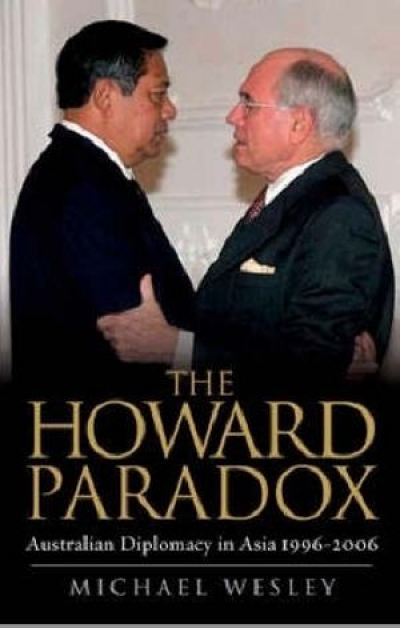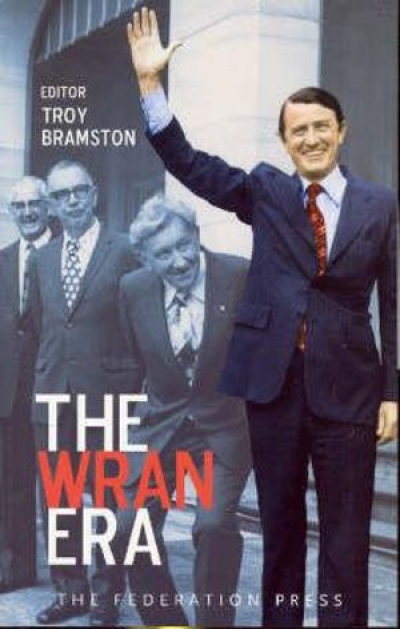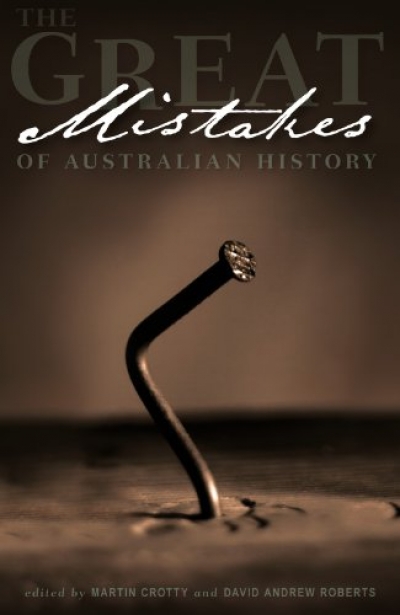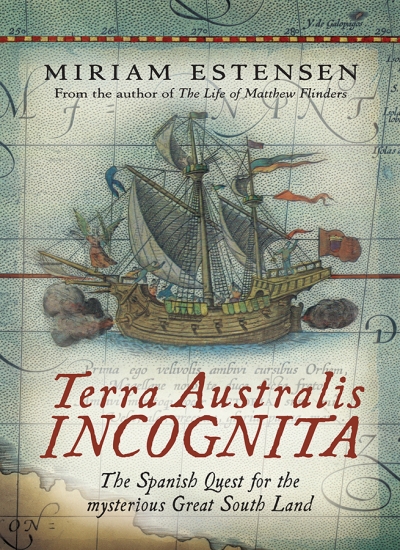Australian History
Continent of Curiosities: A journey through Australian natural history by Danielle Clode
In the late twentieth century, museums throughout the world faced a number of challenges. Confronted with a plethora of flashy new technologies, they struggled to overcome a perception of irrelevance and fustiness. Bureaucrats demanded that museums pay their way, entertain the masses, and meet the growing expectations for instant gratification and information without effort.
... (read more)Lucy Osburn, A Lady Displaced: Florence Nightingale's envoy to Australia by Judith Godden
The cover of Judith Godden’s biography of Lucy Osburn, the founder of modern nursing in Australia, is dominated by a ghostly white statuette of Florence Nightingale. Lucy herself appears in a bottom corner, photographed with a book in hand, an insignificant figure dressed in black silk, with a white cap over a severe hairstyle. At times, it seems as if Nightingale is going to overshadow the book, too. But despite her largely unsuccessful attempts to carry out the wishes of the ‘lady with the lamp’ in New South Wales, Osburn did succeed in creating conditions whereby scientific practices could be introduced into nursing in Australia, though she failed to convince the medical establishment that women could be trusted with medical knowledge or were capable of managing hospitals.
... (read more)The Howard Paradox: Australian diplomacy in Asia 1996–2006 by Michael Wesley
Canberra’s week of the two presidents – October 2003 – brought the unprecedented spectacle of George W. Bush and China’s President Hu Jintau speaking just a day apart to joint sittings of the Australian parliament. The coincidence elegantly dramatised the central questions for Australian foreign policy: how we manage our relationships with our superpower ally, how we live with our neighbours in Asia, and how we get the balance right between them. This has been the essential challenge for every Australian government since World War II. In his important new book, The Howard Paradox, Michael Wesley focuses on one side of that balance – relations with Asia – and on the Howard government.
... (read more)I am at the exhibition ‘National Treasures from Australia’s Great Libraries’. I have come to see a picture of a man named Bungaree. I am standing in front of him, but I am distanced. The painting is glazed, low-lit, hung on a wall on the far side of quite a deep display case. If I stand up straight he is in focus, but too far away for me to see the details. As ...
Neville Wran was nothing if not sartorial. He represented the new generation of politicians – dapper, immaculately tailored, effortlessly elegant – and stood out from his Labor colleagues in their crumpled suits and gaudy ties. His dress sense was not merely a matter of personal taste but also a political statement. He once appeared on the podium of a Labor party conference perspiring uncomfortably in the glare of the arc lights. A colleague leaned over and urged him to take off his jacket. Wran retorted, ‘What! And look like a Labor politician.’ It was classic Nev.
... (read more)Letters Lifted into Poetry: Selected correspondence between David Campbell and Douglas Stewart 1946–1979 edited by Jonathan Persse
The writer Meg Stewart remembers, with affection and an abiding sense of privilege, growing up as witness to the friendship that flourished between two passionate Australian poets. One of these was her father, the New Zealand-born Douglas Stewart, for many years literary editor of the Bulletin. The other was the glamorous David Campbell, who served with distinction in the wartime RAAF and wrote his poetry while grazing his country acres on holdings around the Canberra region of New South Wales. Their friendship was sustained over thirty-five years, from just before the end of World War II until Campbell’s premature death in 1979. From the outset, Stewart especially had warmed to the Campbell charisma, always widely admired amongst both men and women, and amongst the young. In a letter to Norman Lindsay describing their first meeting, Stewart described Campbell as a ‘[m]ost likeable, vigorous bloke who believes that the artist & man-of-action are kinsmen’.
... (read more)The Victorian Premiers 1856–2006 edited by Paul Strangio and Brian Costar
Gough Whitlam was sometimes naughty. Descending in a crowded lift from a conference attended by a number of state parliamentary delegates, he looked down on his fellow passengers and growled ‘pissant state politicians’. It was the sort of remark he liked to get off his chest. In a more deliberative mood, Whitlam, in his 1957 Chifley Memorial Lecture, wrote of state parliamentarians in the following terms: ‘Much can be achieved by Labor members of the state parliaments in effectuating Labor’s aims of more effective powers for the national parliament and for local government. Their role is to bring about their own dissolution.’ These remarks reflect a widespread dissatisfaction with Australia’s ‘colonial’ constitution and with the division of powers between the three tiers of government. The Whitlam government favoured increased powers and responsibilities for both Canberra and local government.
... (read more)The Great Mistakes of Australian History by Martin Crotty and David Andrew Roberts
The trouble about identifying great mistakes in Australian history is that most of them seemed like good ideas at the time. When, for instance, a recent IPA Review identified as one of Australia’s major errors the rejection in 1905 of George Reid’s free-trade federal government in favour of Alfred Deakin’s tariff protectionists, it indulged in anachronistic hindsight. However suited globalisation may be to the geopolitics and technology of the present day, things were different a hundred years ago. Every nation except Great Britain and Turkey used the tariff to protect local capitalists and employees. A whole anthology of ‘great mistakes’ risks deteriorating into a facile exercise in ancestor-bashing.
... (read more)Australian Historical Studies edited by Joy Damousi & Australian Historical Studies edited by Shurlee Swain and Stuart Macintyre
‘Nothing bad has ever happened in the last 218 years of European settlement – and if anything ever did, it has been inflated out of all proportion by self-serving lefty academics.’ The perpetually angry right-wing commentators that dominate the so-called ‘history wars’ would never write anything so crass, but that is the message which appears to permeate the ‘three cheers’ school of Australian history supported by the present neo-liberal establishment. In contrast, recent contributors to Australian Historical Studies (AHS) provide a more nuanced version of Australian history that transcends pointless debates about the ‘goodies’ and ‘baddies’ of the past. In general, the essayists seek to understand past realities rather than to pass judgment on historical actors and their eras. Race is one of the strongest themes in both issues of AHS. David Walker’s ‘Strange Reading’ (No. 128) is a well-written assessment of Keith Windschuttle’s The White Australia Policy (2004). Walker shows that by ignoring key evidence and through selected use of edited historical quotations, Windschuttle has constructed a bogus Australian past in which racist attitudes towards Asia represented a minimal part of the national story. Gillian Cowlishaw (No. 127) also tackles the history wars and the construction of national myths. Cowlishaw stresses the importance of creating Aboriginal history that reflects the personalities and values of the participants: ‘Indigenous Australians remain shadows in the scholar’s margins, passive recipients of “our” actions in the past and “our” regrets in the present.’ This problem can be hard to rectify, because the public record has a tendency to focus on European attempts to ‘manage’ the indigenous ‘issue’; the perceptions of indigenous people regarding cultural change and continuities are not always sufficiently documented, even in recent times.
... (read more)Terra Australis Incognita: The Spanish quest for the mysterious Great South Land by Miriam Estensen
Miriam Estensen is prodigious. It is only a year since I reviewed her Life of George Bass (2005) in ABR, and here is another well-researched historical volume, out in time to mark the four-hundredth anniversary of the Spanish expedition, which inter alia made the first European passage through the Torres Strait.
... (read more)

